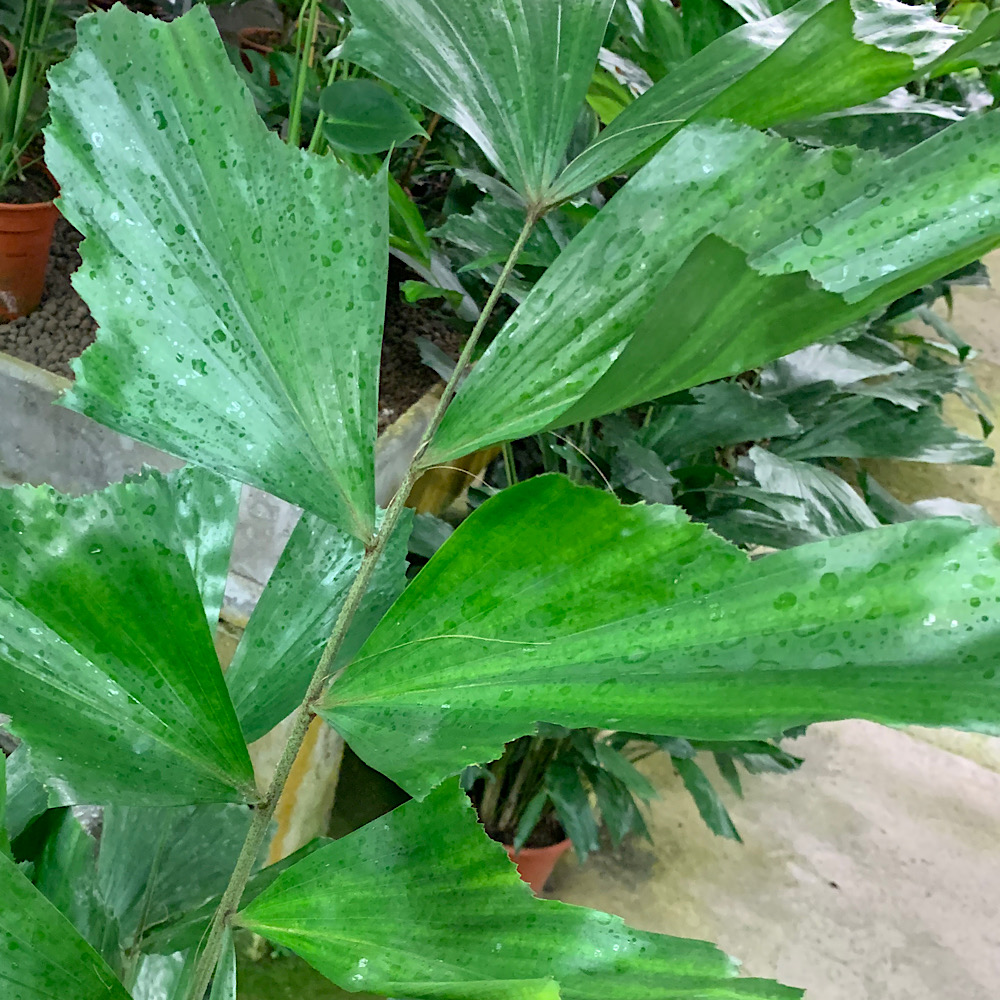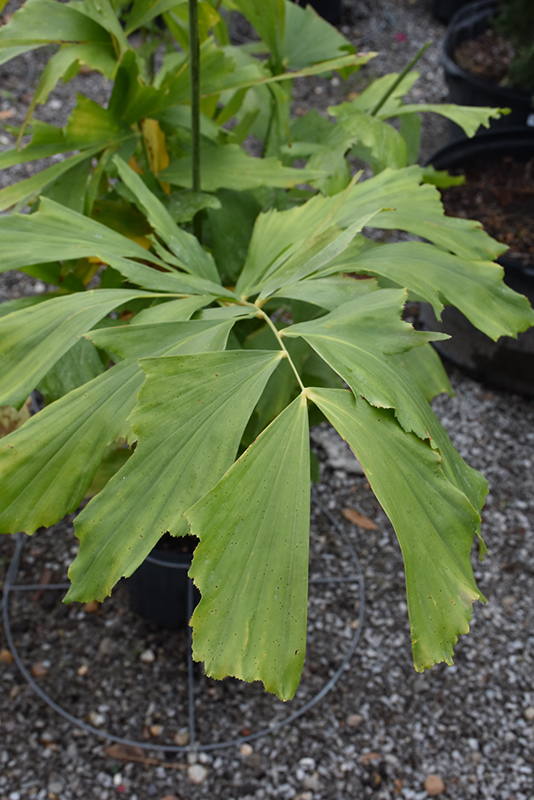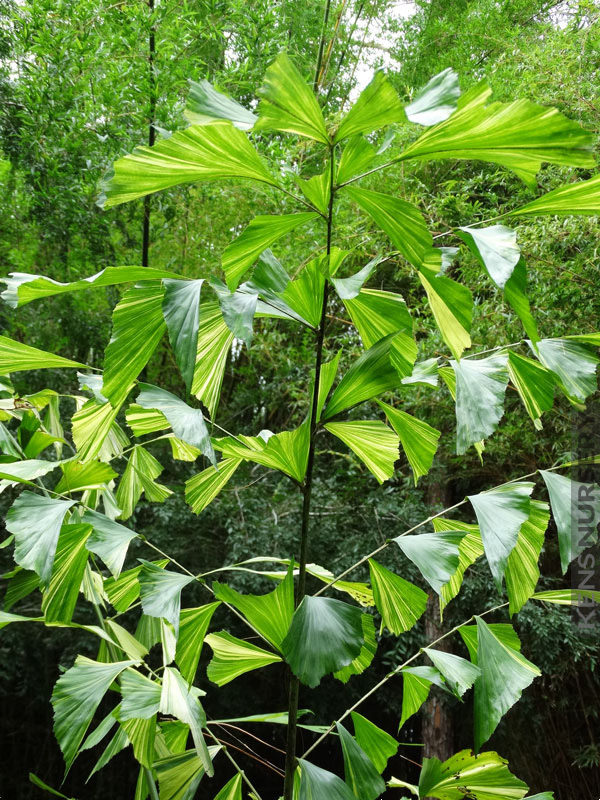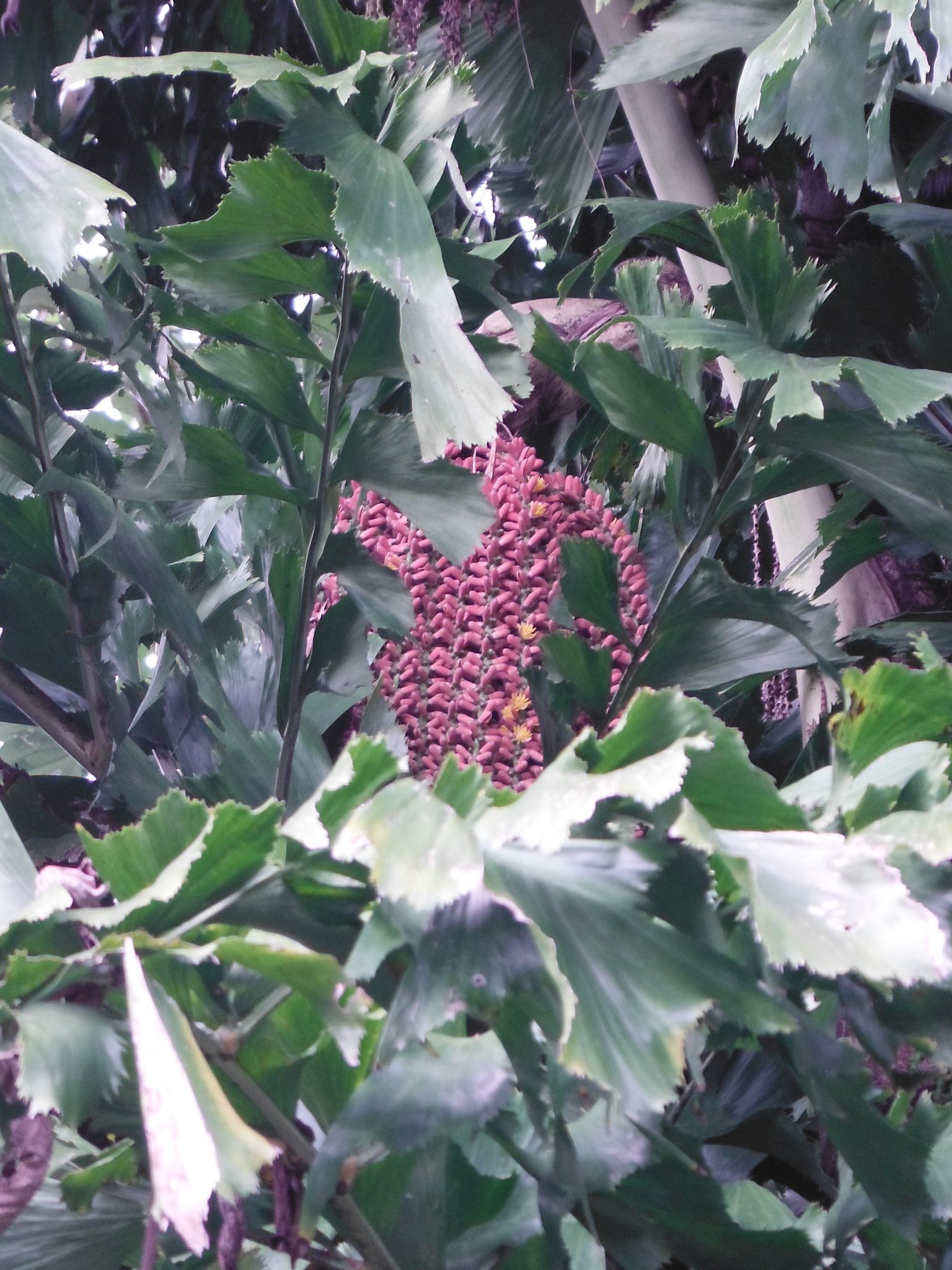
caryota mitis variegata variegated fishtail palm Potted Plants
Caryota mitis. Burmese fishtail palm. An evergreen palm with clustered stems bearing rich green leaves to 4m in length, composed of triangular leaflets, and panicles of creamy-white flowers in summer. Other common names clustered fishtail palm tufted fishtail palm. Synonyms Caryota griffithii
Riverine Parks Caryota mitis
Caryota mitis, commonly called clustered fishtail palm, is a small, clumping palm native to moist, fertile rainforests of Southeast Asia but cultivated in tropical regions around the world. Mature clumps will reach 15-25' tall and around 8-12' wide. The smooth, grey-brown, slender trunks can reach 4-6" in diameter and have distinctive rings..

CARYOTA mitis Vivaio Noaro
Caryota Species: mitis Family: Arecaceae Uses (Ethnobotany): Burmese fishtail palm is used as a poison and a medicine and for fuel and food. Life Cycle: Perennial Recommended Propagation Strategy: Division Seed Country Or Region Of Origin: South East China to Indo-China and Malesia, India, Phillipines. Distribution: Introduced into Florida and.
Riverine Parks Caryota mitis
Caryota mitis is native to southeast Asia where it grows as an emergent . palm in tropical rain forests. Description. This is a clustering species, with many trunks to about 6 m (18 FEET) tall, with bipinnate leaves. Fishtail palms typically form multi-stemmed clusters, up to 25 ft (8 m) high and 12 ft (4 m) wide. Each slender stem is topped.

Fishtail Palm (Caryota mitis) in Issaquah Seattle Bellevue Redmond
Sunlight. C. mitis loves bright, indirect sunlight. They prefer to be located in areas that receive full sun, or 6 to 8 hours of sunlight every day. Southeast- or west-facing windows are perfect for this sort of sunlight requirement. The more light fishtail palms receive, the better because they will grow faster, and last longer.

Variegated Caryota Mitis Fish Tail Palm KensNursery
Two Caryota maxima seedlings sold to me as Caryota basconensis. Caryota mitis is one of the most commonly grown fishtail palms, and is commonly called the clumping or miniature Fishtail Palm. This southeast Asian palm grows up to nearly twenty five feet tall, but in California, struggles to get half that height.

Caryota mitis(Fishtail Palm2) Richard Lyons Nursery, Inc.
The Caryota mitis should only be placed in bright but indirect light. Fishtail Palm leaves Fishtail Palm Tree Features: An Overview. The botanical name of the fishtail palm tree is Caryota mitis. The ends of the leaves split as they mature giving them the look of a fishtail. Propagating the Caryota mitis is easy thanks to its tendency to grow.
Caryota mitis variegated Agaveville
Caryota mitis. The fishtail palm was named for its unusual leaves - shaped like a jagged fish's tail - which form thick, swirled layers of ruffled fronds. Fishtails are clustering palms that grow dense and full. They can be used as privacy screens - especially while they're young - and create a draping mass of deep green leaves among large.

Caryota mitis variegated DISCUSSING PALM TREES WORLDWIDE PalmTalk
Although most Fishtail Palms have single trunks, Caryota mitis, the most popular variety used as a houseplant, is a suckering type. It produces several stems, growing near the base of the main stem and has numerous, ragged- edged leaflets. Caryota urens variety (Wine Fishtail Palm) has fewer, more triangular shaped leaflets..

Caryota mitis (Burmese fishtail palm, Clustering fishtail palm
The botanical name Caryota is Greek for nut (a reference to the fruit), and mitis is Latin for unarmed, which describes the fact that these palms don't have spines as some other similar-looking palms do.. They're also sometimes called clustering or clumping fishtails, or Burmese palms. Note that all plants in this genus are called fishtail palms because of the distinctive leaves, but when.

Polynesian Produce Stand FISHTAIL PALM Caryota Mitis GREEN w
Caryota mitis in Bagh-e-Jinnah, Lahore. Caryota mitis, known as the clustering fishtail palm or fishtail palm, is a species of palm native to Tropical Asia from India to Java to southern China, now sparingly naturalized in southern Florida and in parts of Africa and Latin America. The species was originally described from Vietnam in 1790. In Florida, it grows in hummocks and in disturbed.

Caryota Mitis Bananalicious.pl
They prefer temperatures between 60 to 80 degrees Fahrenheit (16 to 27 degrees Celsius). These palms also like high humidity, so a bathroom or kitchen can be a good spot. When it comes to soil, use a well-draining potting mix. Good air flow around the plant helps mimic its natural habitat.
Polynesian Produce Stand FISHTAIL PALM Caryota Mitis GREEN w
General Information. Scientific name: Caryota mitis Pronunciation: kair-ee-OH-tuh MIT-iss Common name(s): Fishtail palm Family: Arecaceae USDA hardiness zones: 10B through 11 (Figure 2) Origin: native to southeast Asia UF/IFAS Invasive Assessment Status: caution, may be recommended but manage to prevent escape (South); not considered a problem species at this time, may be recommended (North.
Recregarden CARYOTA MITIS
Keep the temperature above 45 degrees Fahrenheit. A room with an eastern or a western facing window is an excellent idea for indirect sunlight. The fishtail palm is a unique palm tree that can grow to be about six to 10 feet tall. It's not a plant that is easy to grow, especially indoors, so you will.
Caryota mitis 'variegata' in Morning garden update DISCUSSING PALM
Description and Ethnobotany. Growth Form. A clumping, medium-sized palm with closely-placed, slender stems that support a crowded mass of attractive, feathery fronds with their unusual fishtail leaflets. Trunk. Stem slender, green, 5 to 15 cm in diameter, with distinct rings at wide intervals; crownshaft absent. Foliage.

Caryota mitis (Kariota łagodna Palma orzechowa) Jungle Boogie
Compra cómodamente online desde donde quieras. Envío gratis con Amazon Prime